Graphic by Kalyani Puthenpurayil
As methods of communication such as emailing and calling became more popular in the 1990s, English teacher Shozo Shimazaki remembers thinking that the post office would go out of business, but the letters that people sent across the world remain in our history.
The forgotten art of writing letters
Exploring the impacts of written forms of communication from loved ones
March 4, 2022
Thoughtful. Underrated. Special. A nice gesture. A method of reflection. A lost art. Below are the experiences of students, teachers and community members regarding receiving and sending handwritten letters.
A stack of paper boats
Daphne Huang
As sophomore Daphne Huang eagerly removed the contents from the gift bag her friend had delivered for her birthday, something fell out. Picking up the neatly folded paper that had tumbled onto the ground, she realized it was a stack of paper boats.
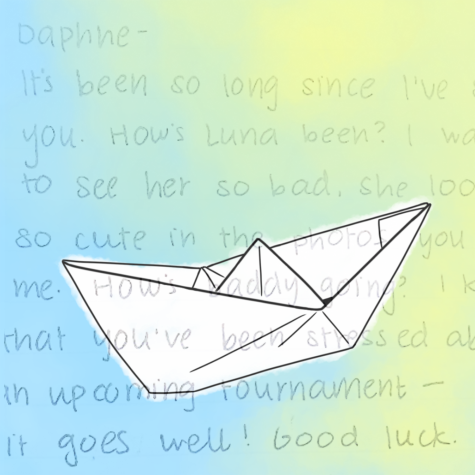
When she further examined them, she observed the writing on the inside. Curious to see what it was, she immediately sat down and unfolded the flaps of one of the boats and, to her surprise, there was a letter written inside it.
As her eyes scanned her friend’s familiar handwriting, a sense of euphoria and comfort washed over her, making her heart beat faster.
She continued to look through the rest of the boats, carefully opening each one to make sure they didn’t rip. Later, when she read the birthday card that had accompanied the paper boats, Huang realized that she had ignored directions for the order that she was supposed to read the letters. But despite that, in the midst of a pandemic that prevented her from going to school and seeing her friends, the letters had a powerful, long-lasting effect on her.
“It was a period of time that was online and writing letters made us [feel physically] closer than we actually were,” Huang said. “There was a portion of [her] in front of me. It felt like [my friend] was there.”
Season’s greetings
Rohin Inani
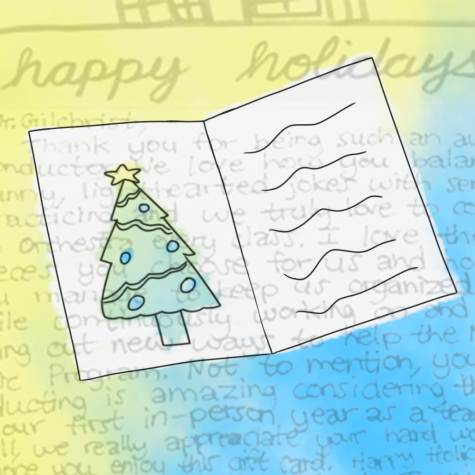
At the end of the first semester of his junior year, junior Rohin Inani wanted to find a way to express gratitude for his teachers. Eventually, he decided to write letters for them. After purchasing a pack of thank you cards from Target, he got to work.
Despite the time required to write letters for all seven of his teachers, Inani made sure that all of them were personalized. He began by wishing all his teachers a good break and a happy new year.
For teachers that he was closer to, like Chemistry teacher Julie Choi, Inani also included anecdotes from the semester like “things that [they] laughed over” and “enjoyable moments in general.” Inani said his teachers were ecstatic to receive his letters.
“It’s just a nice gesture,” Inani said. “[My teachers] worked really hard throughout the semester, especially at the end of semester when [things] get very stressful. I feel like a nice letter can just bring someone’s mood to a completely different phase in their day.”
A shared love for nature
Shozo Shimazaki
When English teacher Shozo Shimazaki used to teach seniors, he recalls having them write letters to themselves at the end of the year. They would then write what they thought would be their most permanent address in five years and stamp the envelopes. Five years later, Shimazaki sent these letters, leading his former students to unexpectedly find a note from their younger self in their mail.
Shimazaki knew how meaningful receiving a handwritten letter would be. When he was in college in the 1980s, he relied on letter writing as his main form of communication.
During the 1970s and 1980s, any kind of document or forms of distant communication were usually sent through mail. Although phones were available, being aware that each minute on the phone would increase the amount of the phone bill forced him to “talk quickly” and prevented him from “saying what [he] wanted.”
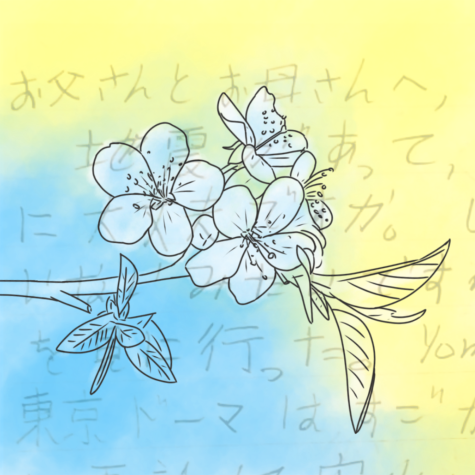
As letters were his main form of communication, Shimazaki reminisces sifting through the advertisements and bills in his mail and being excited to find a personal letter. In those times, the percentage of mail from family and friends among the junk mail reflected the quality of one’s relationships with their loved ones.
Shimazaki recalls how he enjoyed written forms of communication and the rhythm that he fell into while writing them, since letters were something “special that you would work on and send,” rather than a quick text or a thoughtless email.
“[You] talk a little bit reflecting on your feelings about [the] stuff going on in your life, but since you weren’t going to get an immediate response, it’s something you wanted them to know and hold on to,” Shimazaki said. “At least for a week, you might think about what they wrote and what you might say back and it allows you to get a little deeper. Just that pacing allows for more reflections.”
When Shimazaki was in college, he decided to participate in an exchange program and to study abroad in Japan. He was born and raised in America, and thought that this would be an opportunity for him to learn more about where his parents grew up and develop a greater appreciation for the culture.
While in Japan, he would consistently send letters back home to his parents living in the U.S. By visiting Japan, Shimazaki experienced what his parents’ lives used to be like and decided to write a poem for his mom dedicated towards her fondness of nature and hiking.
“I knew her love for hiking in nature started in Japan,” Shimazaki said. “[In Japan], I finally got a sense of what it looked like and it felt like for her, so I wrote a poem on that. [My mom] likes to take photographs so she did send me back as a response a photo of some wild flowers she took recently. [She was] confirming, not in words, but in texture, that love of nature.”
Similar to Shimazaki, his 93-year-old mother too likes handwritten communication. His mom is set on writing a letter to her sister, and although Shimazaki had told her that she could call her sister, his mom would stubbornly respond with, “Oh no, no, I am going to write a letter.” Although she hasn’t sent that letter yet, Shimazaki sometimes finds her drafting the letter to her sister.
Handmade paper hugs
Renee Fallon

Biology teacher Renee Fallon is a strong advocate for giving, and one way she expresses this is through making cards. She finds it is a nice way to show her appreciation and a fun way to relieve stress.
“One of the things people don’t understand when they are talking about happiness is that giving can actually give more happiness than receiving,” Fallon said.
Fallon makes these cards by herself and enjoys the process of crafting the card to match the receiver. During quarantine, Fallon went out of her way to write cards for her colleagues and sent them through the mail due to the social distancing guidelines. Opening Fallon’s card was an uplifting moment for her colleagues — despite the lack of contact that people had with each other, her card was like a “paper hug.”
Les cartes postales
Janissa Zahn
When her professor introduced an organization for students to send letters to people in France, then 21-year-old French teacher Janissa Zahn did not hesitate to sign up. As she scribbled down her name and address, she hoped that someone would send her a letter.
To Zahn’s excitement, a few days later, she received a letter from someone and immediately wrote back. A week later, she received a letter from someone else. Soon, she had a stack of letters from people who wanted to be her pen pals. After reading their letters, Zahn finally realized the factor that was making her a popular candidate for her French pen pals was her home state, Arizona. Her pen pals were curious about the contrast between the chilly weather in France and the hot weather in Arizona, leading them to choose Zahn as their recipient. Zahn was unable to respond to all of the letters she received, but she was able to foster close friendships with a select few.

Every week, she would check to see if she had received any letters from her pen pals. In the letters, they would talk about what the city they lived in was like, the food and other aspects of the culture. Zahn used their vivid descriptions to paint a picture of what it would be like to live in France, with the sweet aroma of the street food, the old, discolored buildings that decorated the streets, the cyclists who biked by and the sounds of the language.
Eventually, Zahn got into the habit of regularly checking her mail and answered in accordance to a “timeline of politeness” so that her correspondent wouldn’t be kept waiting for a letter to arrive in their mailbox. Sharing the highlights of her week, the experiences she had, the places she had gone to and funny moments, Zahn kept it simple with her pen pals, letting them understand what life was like for an ordinary college student in America.
“It’s a way of being close with the person and finding out how they’re doing,” Zahn said. “It’s not as easy to communicate a lot of things in writing than it is if you’re talking to someone, because it takes a lot longer to write. [Writing letters] is just a way to get closer with somebody and find out something about them that you didn’t know before.”
Today, Zahn keeps the letters that she exchanged with her pen pals stowed away in a box that she brought along with her when she moved from Arizona to California. She finds it “weird” that the new generations are growing up without any idea about the history of letter writing and considers it a “lost art.”
The trip they took across the world
Venkat Ananthan
No one in parent Venkat Ananthan’s family had ever been to the U.S., so he didn’t know what to expect when he was going to move there. He didn’t know what the weather would be like, what items he should take with him, where he would stay and he couldn’t even do a simple Google search to find the answers that he wanted due to the inaccessibility of the internet.
Fortunately, while he was talking to a classmate about his college decisions, he found out that her brother, Sri Lakshminarayanan, was studying at Rensselaer Polytechnic Institute, the university he was set to attend and got his address from her. Ananthan then sent a letter to Lakshminarayanan asking him all the little questions he had: What is available there? What kind of clothes should I bring? What kind of utensils should I bring? When should I come to America? Who will be able to pick me up from the airport?
After a few days, he received a response to his letter that contained the necessary information. Sri Lakshminarayanan was also nice enough to offer Ananthan a ride from the airport, and even allowed him to stay at his apartment for several weeks until Ananthan was able to find his own apartment.
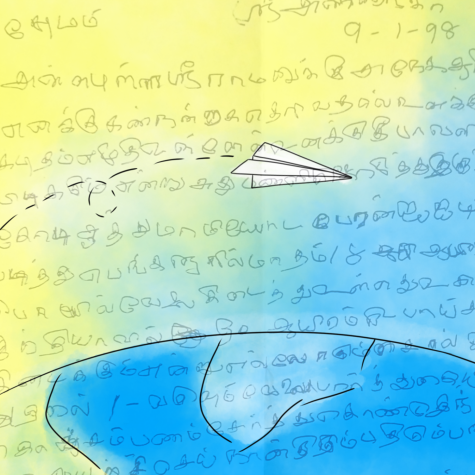
Ananthan was all set. Now, he just had to make the trip to the college he was going to attend in New York. Ananthan recalls feeling scared but also relieved because he was traveling with a friend, so he knew that someone would have his back.
“We had to change flights at Frankfurt and then come to New York,” Ananthan said. “This was the first time I [was] flying on a plane. I was so scared about whether I was sitting in the right plane [and if I was] really going to New York.”
A few days after he arrived in the U.S., Ananthan received a letter from his father. Dated Aug. 9, 1995, this was the first letter that Ananthan received after arriving in New York. His father inquired details about Ananthan’s stay, such as how he got food, how he was maintaining his health and how he was holding up with the unfamiliar weather.
In the letter, his dad says, “I understand that your friend Sri Lakshminarayanan is talking to his parents over phone on alternate Sundays. I suggest that you may phone to me on other Sundays.” The friend he was staying with, Lakshminarayanan, who had already been in the U.S. for more than five years, was only able to contact his family bi-weekly for short periods of time due to how expensive it was to make overseas calls.
With the limited calling, writing letters became Ananthan’s way of communicating with his family in India. Ananthan remembered how when he was in India, he used to check the mail to see if he had gotten a letter from his aunt who lived in a different city.
“Everyday, you go to the mailbox and you [look],” Ananthan said. “Did I get something in the mail? Did my aunt reply back? No. OK. Well, it’s not a disappointment, but OK. You don’t get anything today, so tomorrow you see if there’s a reply coming back. And then once you get the reply, then your aunt is probably going to wait for your reply back.”
In the U.S., his daily habit of checking the mail to see if there was something for him continued. Then, on Sept. 16, 1995, a month into his stay in New York, Ananthan received a letter that he holds close to his heart even today. It was from his late grandmother. Despite having other options such as dictating the letter to Ananthan’s father, his then-80-year-old grandmother took the time to write the letter to him. She stuck to asking simple questions concerning his health, such as if he was eating vegetables and drinking milk, but to Ananthan, the trip that letter had taken across the world delivered a page full of warmth and affection — a piece of home that had arrived in the midst of his homesickness.
Ananthan received many more letters: recipes from his aunt on how to cook authentic dishes, wishes from his friends on his birthday, prayers from his father’s friends and check-ins from his family. Although he doesn’t write letters anymore, Ananthan likes to send postcards from places that he has been to to his children. Similar to how he kept the letters that his loved ones sent him, Ananthan hopes that his children will preserve and cherish the postcards he sends them.
The cousins’ correspondence
Yamini Mathew
Junior Yamini Mathew was not expecting a letter addressed to her in the mail. Confused, she opened it to be met with the handwriting of her then 7-year-old cousin living in Los Angeles. After scanning the contents of the letter, she learned that her cousin was writing because he had chosen her to be his pen pal for a project he had to do.
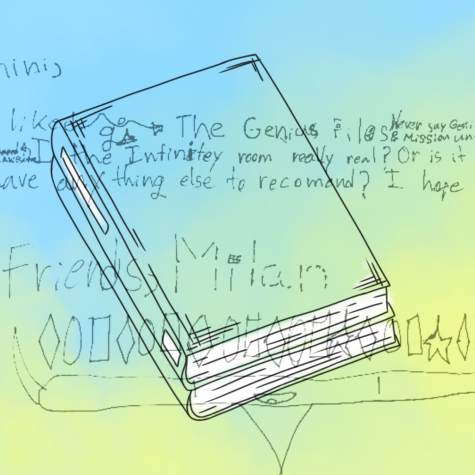
“I was sent a letter and I feel like the only way to properly reply to a letter is to write one back,” Mathew said.
And thus began Mathew’s letter writing journey.
Both Mathew and her cousin share a passion for reading, which they discuss thoroughly in their correspondences. Mathew usually gives him book recommendations and her cousin writes back with his thoughts on the book, sometimes including an illustration of a scene or superheroes from the book. She also sends him temporary tattoos and posters of superheroes — miscellaneous items that can fit in an envelope.
Mathew can’t see her cousin regularly due to the distance that separates them or call him because of his limited access to a phone, so their interactions mostly consist of the letters they send to each other. Two years later, she continues to write to him, mailing him letters on a monthly basis. She puts up his letters on her bulletin board to serve as a reminder to reply.
“Every time I look up, I see the letters,” Mathew said. “And then I know I have to write something back to him. I don’t want to disappoint him. He’s little. He’s expecting a letter.”
Conclusion
Whether it be to communicate with friends and family far away or to express gratitude, the MVHS community uses letter writing to stay connected with others. The emotion that these sources’ letters contain cannot be expressed just by these short stories. To explore their letters visually, click here.


